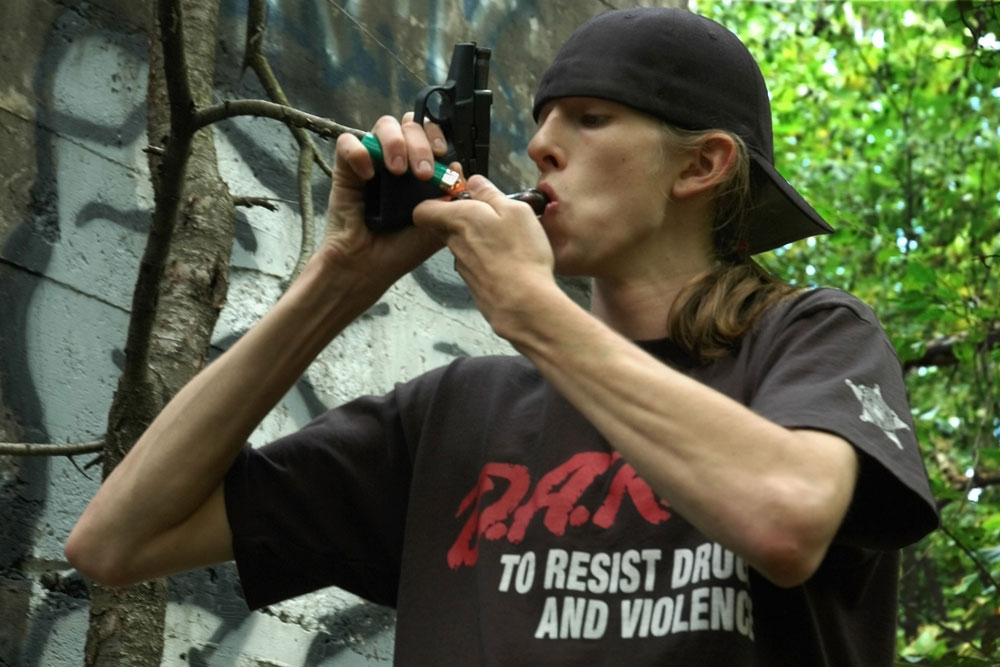Was D.A.R.E. Effective?

Most Americans who are currently in their 20s and 30s spent a significant amount of time in 5th or 6th grade homeroom hanging out with a police officer, conjuring up scenarios in which someone might offer us drugs or alcohol, and brainstorming ways to turn them down.
"Hey, kid, want to smoke some crack behind this tree?" the officer would ask.
"Nah, I've got basketball practice," we students would reply in unison.
Drug and Alcohol Resistance Education, or D.A.R.E., was introduced into elementary school classrooms in 1983; though no longer as widespread as it once was, it is still part of the curriculum in many school districts. But does it work? Did we, the alumni of the D.A.R.E. program, end up just saying "no" to drugs?
No.
D.A.R.E. was (and is) completely ineffective in preventing drug use. The numbers demonstrating this started rolling in way back in 1992, when a study conducted at Indiana University showed that graduates of the D.A.R.E. program subsequently had significantly higher rates of hallucinogenic drug use than those not exposed to the program. (Maybe they shouldn't have told 5th graders that hallucinogens exist.)
Every subsequent study on the effectiveness of D.A.R.E., including a major 10-year investigation by the American Psychological Association, found much the same result. The program doesn't work, and in fact is counterproductive, leading to higher drug use among high school students who went through it compared to students who did not. Because of those studies, D.A.R.E. lost federal funding in 1998.
Sign up for the Live Science daily newsletter now
Get the world’s most fascinating discoveries delivered straight to your inbox.
The reasons for D.A.R.E.'s failure are summed up by the words of the psychologist William Colson, who in '98 argued that D.A.R.E. increased drug awareness so that "as they get a little older, [students] become very curious about these drugs they've learned about from police officers."
Despite the fact that all that just saying "no" apparently makes many kids secretly think "yes," D.A.R.E. was never totally phased out. Throughout the '90s, national leaders of the program resisted the scientific findings, and in some cases even tried to bribe academic journals not to publish them. Program leaders told the press that strong public support for D.A.R.E. was a better indicator of its success than any hard numbers. They also claim the program improves the relationship between youths and law enforcement.
There's one thing the D.A.R.E. program definitely did do right: We all got a lot of wear out of those T-shirts. But then again, who knows what psychological impact that graffiti-style red-on-black had.
Follow Natalie Wolchover on Twitter @nattyover. Follow Life's Little Mysteries on Twitter @llmysteries, then join us on Facebook.
Natalie Wolchover was a staff writer for Live Science from 2010 to 2012 and is currently a senior physics writer and editor for Quanta Magazine. She holds a bachelor's degree in physics from Tufts University and has studied physics at the University of California, Berkeley. Along with the staff of Quanta, Wolchover won the 2022 Pulitzer Prize for explanatory writing for her work on the building of the James Webb Space Telescope. Her work has also appeared in the The Best American Science and Nature Writing and The Best Writing on Mathematics, Nature, The New Yorker and Popular Science. She was the 2016 winner of the Evert Clark/Seth Payne Award, an annual prize for young science journalists, as well as the winner of the 2017 Science Communication Award for the American Institute of Physics.











